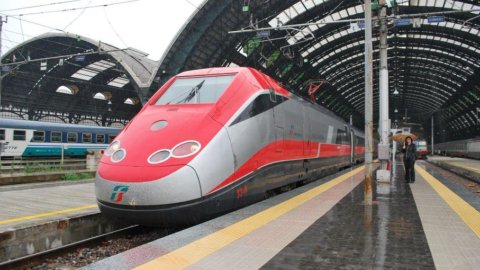The last jewel was the Frecciarossa1000, a high-speed train recently inaugurated and the result of collaboration with the Canadian giant Bombardier. In addition to high-speed, diesel and electric locomotives, double-deck electric trains, Electric Multiple Units (EMUs), Diesel Multiple Units (DMUs), modern driverless subways and Sirio modular trams. And the provision of traffic management systems, signaling and related services in the rail and urban rail transport market.
One hundred and sixty years of made in Italy high technology will fly the Japanese flag this year, thanks to the agreement reached by Finmeccanica to sell ANSALDOBREDA and 40% of Ansaldo STS to the Japanese group Hitachi, whose offer was preferred to that of a Chinese consortium and will yield 9,65 euros for each Ansaldo STS share held by Finmeccanica (and a takeover bid on the rest of the capital) and 36 million euros for AnsaldoBreda.
Finmeccanica will carry out with this operation one net capital gain of 250 million euros (and a reduction in net debt of approximately 600 million at the end of 2015), and above all a clear strategic choice: goodbye transport, now all the forces of the Italian group will be channeled to the most profitable sectors, from the aerospace industry to defence. As well as Ansaldo STS however, was not profitable: the company founded in Genoa in 1853 and listed on the Stock Exchange since 2006, where it gained almost 30% in the last year, now nearly 10 euros after reaching 6,52 in June 2014, has for decades been one of the flagships of Italian know-how. The group still has its headquarters in the Ligurian capital, but counts to date 4 employees in 30 countries around the world.
The same cannot be said of the "twin" ANSALDOBREDA, a brand also known abroad for high-speed trains (in addition to the Italian ones, it has created a series for the Brussels-Amsterdam line) and driverless subways, of which it is the largest manufacturer in the world with 30% of the market: the first city in the world to have a driverless metro was Copenhagen then Brescia, Turin, now Milan (with lines 4 and 5) and Rome (with line C) but also Taipei, Thessaloniki, Ryadh and Honolulu.
An excellence which, however, has not translated into the accounts: hundreds of millions of euros "burned" every year, due to low-margin orders and the emergence of problems such as those which, for example, followed the delivery of high-speed trains "Fyra" on the railways of Belgium and Holland, with remittances of responsibility between the parties and, at the end of the legal case, with the Pistoia company succumbing. A ballast for the parent company Finmeccanica, despite the signs of recovery thanks to the orders registered in recent months, in particular that for the line 4 of the Milan underground, for which AnsaldoBreda will supply 47 trains with an agreement worth 250 million euro.
The sacrifice of the STS jewel, on the other hand, is appreciated both by the markets, which today reward the stock with a gain of over 6% on the Stock Exchange, and by the Minister of Economy Pier Carlo Padoan, who comments with a laconic: "It seems to me a good operation" . What about Hitachi? Seen from Japan, the operation records a double record: it is the largest foreign acquisition for Hitachi and at the same time the largest largest Japanese investment in Italy. In a period of particular weakness for the Japanese currency, this is indeed a monstrous 250 billion yen deal. But for Hitachi Rail, the segment of the electronics group that aims to become the global leader in railway solutions, the operation is absolutely strategic: already present on the world high-speed market with Shinkansen models, since 2009 it has created the service in partnership with the British Railways high-speed commuter (with average distances of 200 km/h) which connects the suburban urban network of London with the very center of the City.





